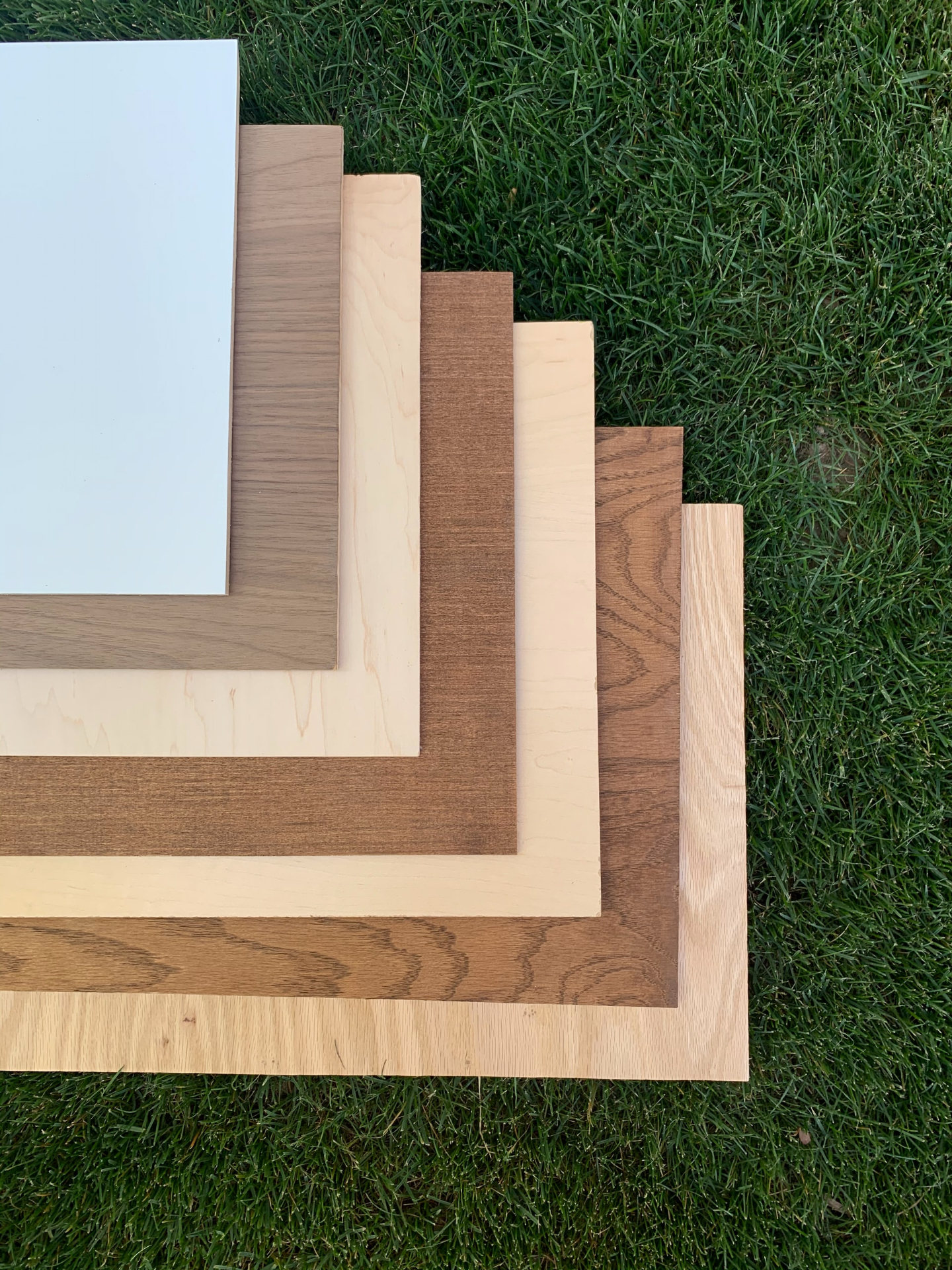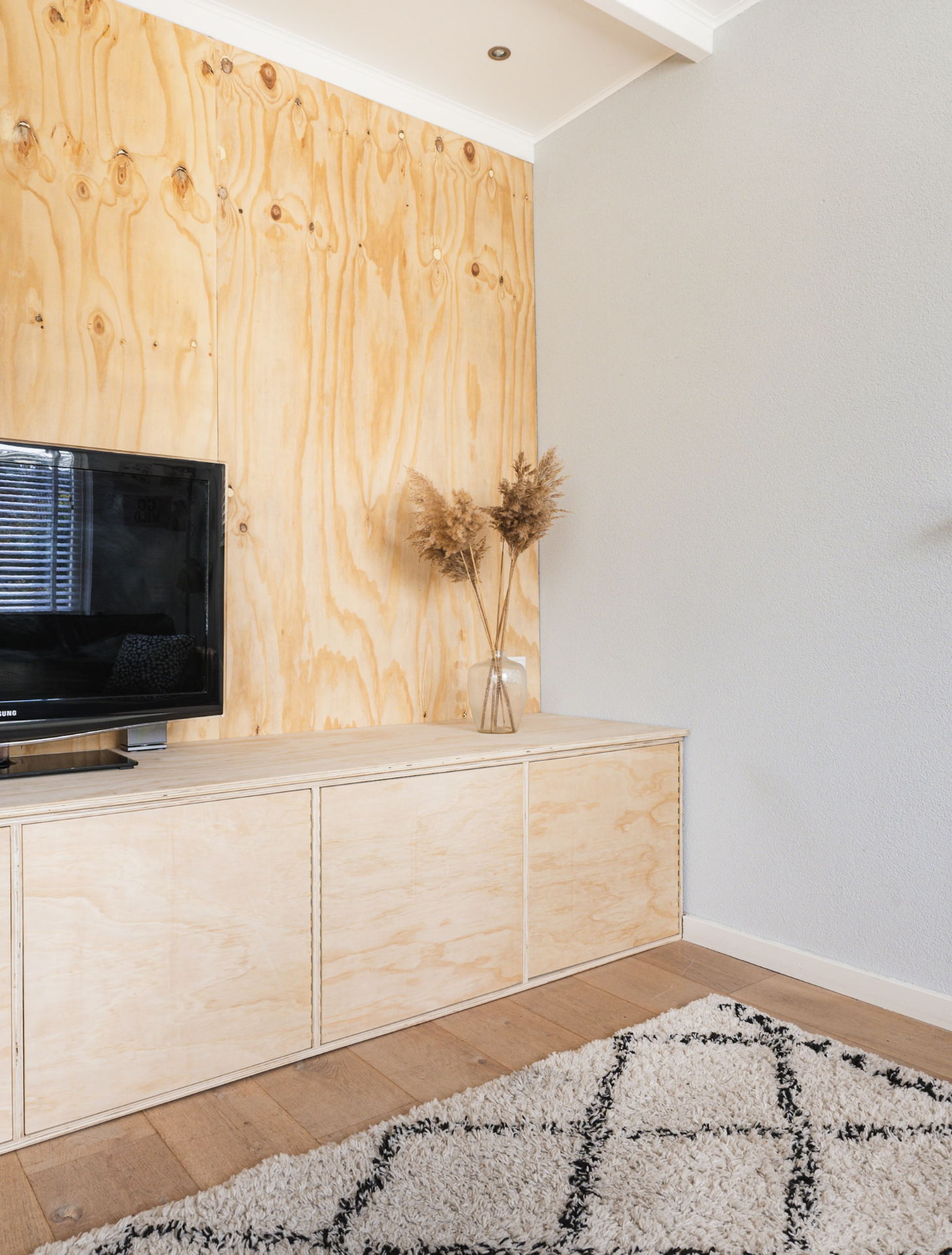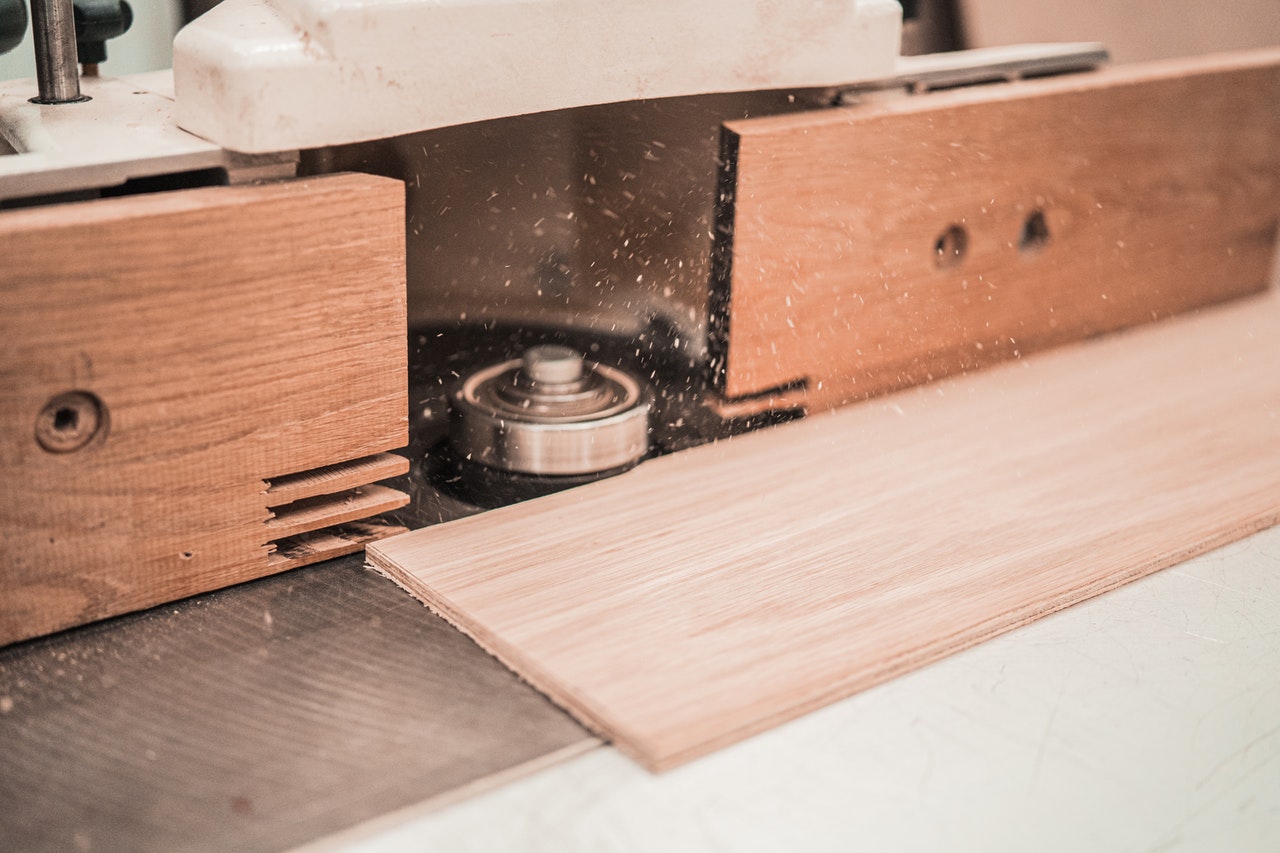What is Plywood?
Plywood is a material produced through the process of gluing thin layers, known as 'piles' together; these 'piles', as the name suggests, are plywood sheets/panels of specifically wood veneers.
Adjacent layers are glued together by rotating each pile 90 degrees from one another; this is done by checking their grain. Due to the creation process, plywood is categorised under the umbrella of manufactured boards, such as OSB or MDF. Plywood is made from douglas fir, spruce, cedar, pine or fir trees.
Applying the layers adjacent to the grain or, in more technical terms, cross-graining; cross-graining lowers the chances of the material splitting, especially on edges and helps prevent expanding or shrinking, overall improving the composition. Other improvements to plywood include applying an odd number of piles to balance out the overall composition and prevent the material from warping.
Properties of Plywoods
Plywood combines the strength of each timber pile/panel it is comprised of to increase its own strength, making plywood high strength and durable.
Plywood applies an odd number of piles/panels to balance out the overall composition and prevent warping or bending.
Plywood is very versatile, more so than average cut timber; the thickness of the veneer can be altered as well as the number of back veneers to increase the overall strength needed.
The adhesive used when binding the plywood makes the plywood heat and water-resistant. This makes plywood a great choice for outdoor or marine use.
Specific types of plywood, such as marine plywood, are specialised for moisture and water resistance.
Plywood treated with chemical coatings or preservatives can make the materials resistant to fire or corrosion when exposed to fire or chemicals.
Plywood is very flexible and can create curved shapes without the fear of pressure or snapping.
Cross-grained or cross-laminated plywood allows for plywood to have great impact resistance and tensile strength making it extremely durable.
The dimensional stability of the crossbanded layers within the plywood prevents warping, shrinking and swelling.
Urea-formaldehyde is commonly used when plywood is produced, isn't safe to inhale, and can become expelled when sawing or sanding.
Plywood can also splinter easily, so make sure the surface is smooth before use on the flooring or other such surfaces. It is worth contacting a specialist for any help regarding plywood and its hazards.
Due to the properties of plywood, it makes for great sound insulation.


Common uses of Plywood
There are many exterior and interior uses of plywood from design to construction/structural plywood and can all be applied differently. Some examples of uses of plywood are:
Interior flooring (often combined with concrete) and ceilings
Exterior flooring and roofing
Interior walls
Garden external furniture
Household internal furniture
Construction or building materials such as beams to hold up roofing
Construction projects
Cladding walls and surfaces for bracing purposes
Design materials
Exterior wall sheathing
General projects such as school or hobbies
Kitchen Cabinets
Working With Plywood
The applications for plywood are versatile and have a wide range. Due to the durability and strength of plywood, it is widely used in many exterior furniture sets, flooring or garages/sheds.
Plywood is used and excels at construction and design, especially due to its resistance to factors such as water or moisture, allowing for framing or even marine plywood work to be suitable.
Higher grade plywoods are higher quality meaning an A grade plywood is sanded down, smooth and is easily paintable; lower grades of plywood may provide more difficulty and lower quality.
In terms of performance, it's hard to beat plywood when it comes to construction and is known as the defacto choice for construction/structural applications or as facade panels.
Construction/structural plywood is hard to snap under stress allowing for curved or flexible durable shapes such as skateboard ramps to be formed more easily than other conventional timbers/woods and is more suitable to withstand use and pressure. It is cost-effective to make plywood, and its affordable nature and advantages make it a great choice to work with.
It is worth noting when you use plywood that you use the correct protection as urea-formaldehyde is commonly used when plywood is produced and isn't safe to inhale and can become expelled when sawing or sanding the plywood.
Sawing or sanding the plywood should not take place in an interior location and should take place in an external or secure, easily cleaned area. Plywood can also splinter easily, so make sure the surface is smooth before use on the flooring or other such surfaces.
It is worth contacting a specialist for any help regarding plywood and its hazards.

Get in Touch
Contact us today for local timber delivery in Manchester and the surrounding areas.
Theos Timber are Manchester's leading timber merchants, supplying a range of timber and lumber products.
No project is too big or too small; get in touch to discuss your requirements.
Theos Timber
13 West St, Clayton, Manchester
Manchester
M11 4EF
